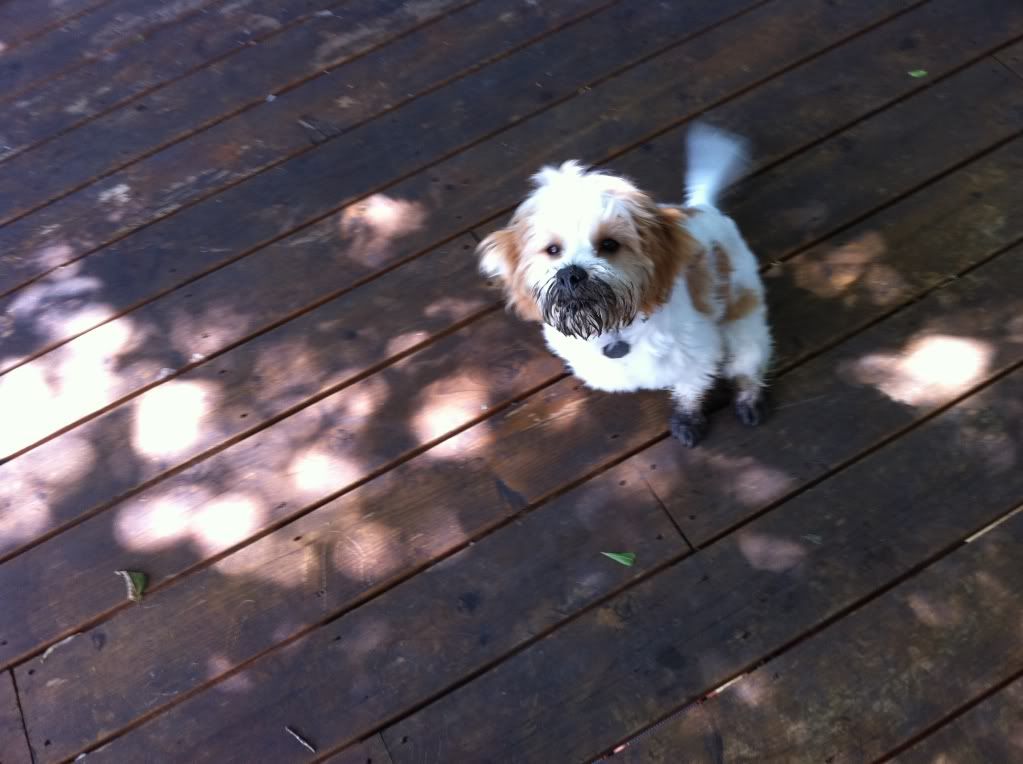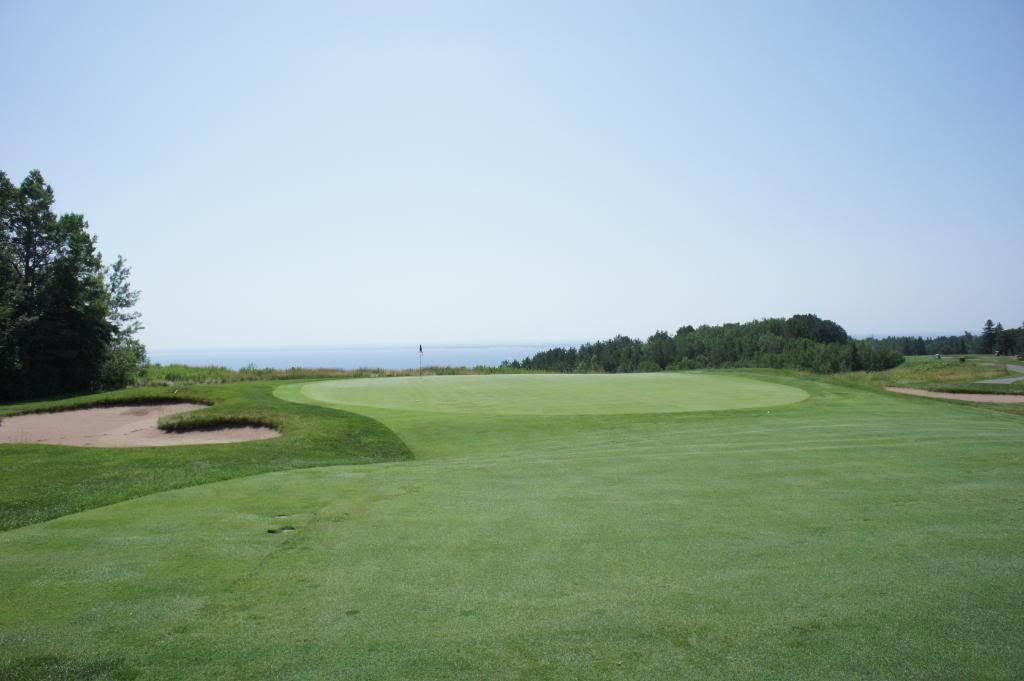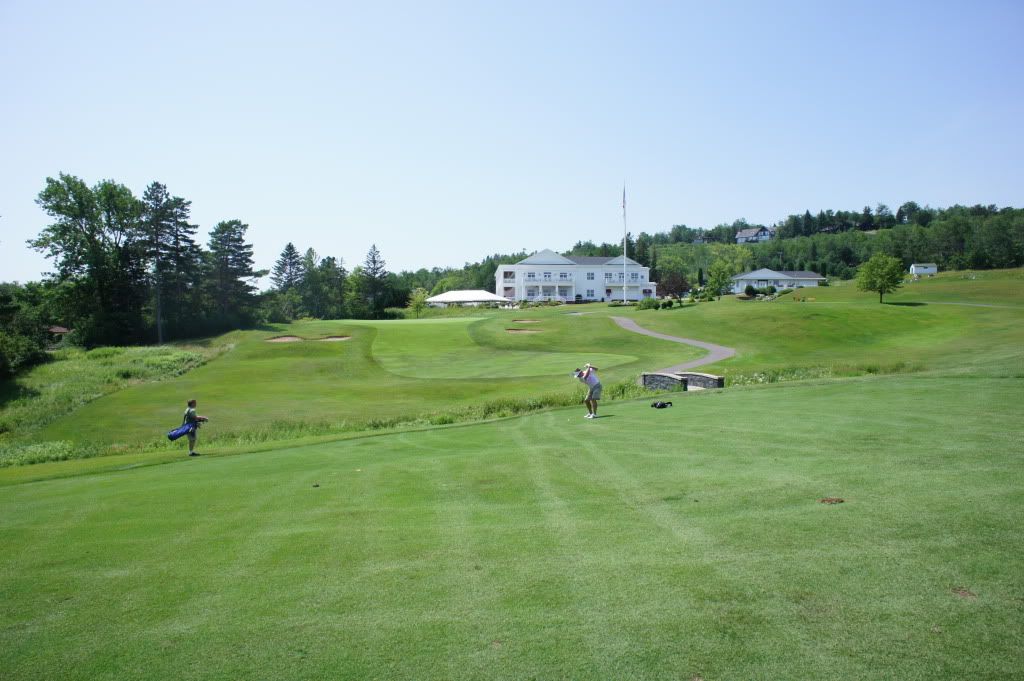Rather than visit somewhere else this summer, I invited John Mayhugh to visit Minnesota to play in our member guest. Picking up on the theme from our Wales trip for the Buda last year, we created an itinerary that included some of Minnesotaís most highly regarded courses as well as a sampler of quirk that I knew John would enjoy.
Unfortunately, the weather in Minnesota has been poor for golf courses this year. Significant winter kill inflicted damage in many areas. A cold wet spring kept soils saturated and cold, preventing normal recovery to the grass.
The new puppy did not mind as she prepped the house and back yard for Johnís arrival:

After the wet rainy spring, the weather turned extremely hot and humid for this area. On the day of Johnís arrival, Minneapolis set a record for the highest recorded dewpoint.
http://minnesota.publicradio.org/collections/special/columns/updraft/archive/2011/07/twin_cities_dew_point_record_c.shtml I enjoyed that weather by playing a golf match and getting trounced on the afternoon of John's arrival. Clearly, my game was set for the onslaught to come.
John and I drove up to Duluth on Tuesday evening. Some think of that area of the country as the home of Bob Dylan:

John and I thought of the area in terms of people slurring their speech while arguing about something indecipherable at the hotel bar. Some may also think of the fresh cool breeze blowing off Lake Superior. A more powerful memory came from with the strong smell of chlorine wafting out of the indoor hotel pool.
Cleansed with the sanitized air, we made our way to Northland County Club. Our round consisted of a mini-GCA outing that included Ben Kodadek, Morgan Clawson, Dan Kelly and our host Chris Tritibaugh, superintendant at Northland.
Northland is one of my favorite places to visit in Minnesota. It is a challenging course, built on a hillside overlooking Lake Superior. The greens have little internal contour but are confounding as one constantly needs to gauge how much putts break in the opposite direction than they appear to break. Despite a number of recent thunderstorms, Chris Tritibaugh had many of the fairways surprisingly firm, as several drives bounced like a superball.
Northlandís routing is also outstanding given the severe slope on the property. After a downhill opener, you play two holes straight up the hill and thereby get most of the severe climbing out of the way early. The best holes are in the middle of the course and then you get the fun of playing severely downhill holes with views of Lake Superior as a background. You finish with a classic Donald Ross long par four to a severely sloped green.Chris explained that members were initially unhappy with the routing because the 9th hole did not return to the clubhouse. They asked Ross to take a second look. Ross did and told them the routing needed to stay as is. My legs thank him.
Early in the day, an easterly breeze kept the temperature comfortable and I expressed optimism that we were in for a pleasant day. Chris killed those thoughts by informing me that the temperature was normally about 60 degrees with such a wind off the 42 degree water. Chris proved to be correct and our group resembled a team of mules after a hard day in the field when the round finished.
Here are a few pictures of the course that John took and kindly shared with me:
Approach to 13

10 looking back

Chris showed he was an experienced superintendant. Near the clubhouse he hit a wide variety of crooked shots and played volleyball with chip shots over the greens. At the far end of the course he made 3 birdies in a four hole stretch. He returned to chopping the ball around the green for the closing holes.
Kodadek approaching 18. He either killed a drive or dumped one in the water on this uphill hole of over 400 yards:

Northland provided a memorable first stop in our jorney. After a tour of the clubhouse and an opportunity to review a master plan for changes considered at the course, Kodadek, Kelly, Mayhugh and I got in the car for a two hour drive to Big Fish in Hayward, WI.